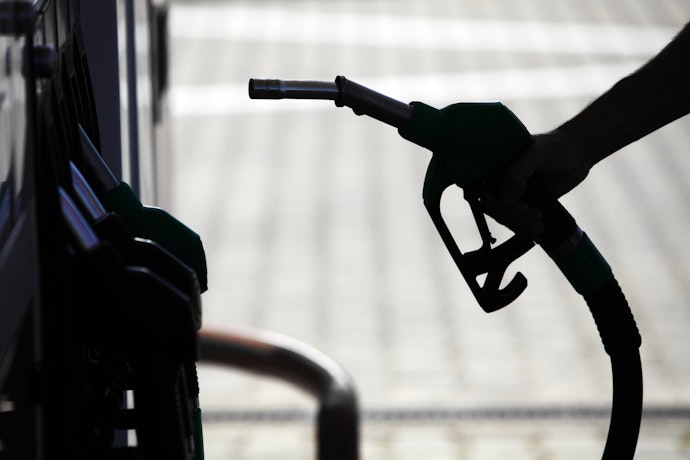How smart video fuels smart business
Learn how innovations in video powered by AI and machine learning are helping to reshape safety and efficiency.
Read more
On average, fuel represents 60% of a company's total fleet operating budget.1 Given the impact that fuel has on the bottom line, fleets certainly want to curb its cost as much as possible.
Embracing driver education can help drivers learn how to increase fuel savings, no matter where they are headed. Here are some steps fleet managers can take to educate their drivers on how fleet management technology can help achieve a culture of fuel efficiency.
Educating on good driving habits can help reduce fuel use by showing drivers how it improves both job security — by making the company more profitable — and the environment through reduced greenhouse gas emissions. It can also help drivers be more conscious of how their driving impacts fuel consumption, as well as the safety benefits of driving more responsibly.
Here are a few tips for drivers that you can use as part of a driver education program:
1. Monitor traffic ahead
By keeping an eye on upcoming traffic conditions, drivers can anticipate having to slow down. It is more efficient to keep a truck moving than to start from a complete stop, which also reduces the number of gear changes needed. Drivers should also check for any hazards ahead, both for safety reasons and to improve efficiency.
2. Obey posted speed limits
Driving at high speeds can have several negative effects, including additional stress on the engine and an increased risk of accidents and speeding fines. Speeding can also decrease the fuel economy of a vehicle.
According to the U.S. Department of Energy, “Speeding increases fuel consumption and decreases fuel economy as a result of tire rolling resistance and air resistance. While vehicles reach optimal fuel economy at different speeds, gas mileage usually decreases rapidly at speeds above 50 miles per hour (mph).”2 In addition, “obeying the speed limit, accelerating and braking gently and gradually, and reading the road ahead can improve the fuel economy of your vehicle by 15%-30% at highway speeds and 10%-40% in stop-and-go traffic.”2
3. Avoid excessive idling
According to energy.gov, “Idling a heavy-duty truck consumes about 0.8 gallon of fuel per hour. Even when diesel costs as little as $2.50 a gallon, fuel for one 10-hour rest period will cost $20. Typically, a long-haul truck idles about 1,800 hours per year, using about 1,500 gallons of diesel.”3 Use of the air conditioner while idling can drain fuel economy even more. It’s clear the costs can quickly add up, so be sure to pause and check if you really need your engine running. If not, turn it off.
4. Avoid overfilling
If a fuel tank is filled to the brim, it can easily overflow when the fuel is heated, either by the sun or from fuel returned by the engine. This is not only dangerous to other road users, but also wasteful.
5. Maintain correct tire pressure
Make sure the tires are kept at the correct pressure to help improve fuel economy and the life span of the tires. This can also help reduce the chance of an accident due to a tire blowout.
6. Set up an easy departure
If stopping for rest, park the truck so as to avoid a lot of maneuvering with a cold engine, as this can use a lot of fuel. In addition, park in the shade to minimize use of air conditioning systems during the summer.
7. Use cruise control
Keeping your fleet vehicle at a constant speed is an easy way to add fuel efficiency. When possible, use cruise control for highway driving.
8. Stay up to date with preventative maintenance
It’s important to make sure air filters and spark plugs are replaced at their recommended intervals. Preventative maintain can also help to get ahead of possible issues with fuel injection and oxygen sensors.
In addition to implementing a driver education plan, you can use fleet management technology to create a more fuel-efficient fleet.
As part of a fleetwide management system, managers can use these tips to reduce overall fuel usage and save thousands of dollars. Not only does reducing fuel use boost profitability, it helps increase efficiency and improve the company’s bottom line.
To learn more about how fleet management technology can positively impact fuel spending, download our Five Ways to Reduce Fuel Costs eBook to discover some of the best ways to minimize fuel costs.
Resources:
1https://www.automotive-fleet.com/346725/containing-fuel-spend-is-a-top-fleet-focus-despite-price-stability
2https://afdc.energy.gov/conserve/behavior_techniques.html
3https://afdc.energy.gov/files/u/publication/hdv_idling_2015.pdf
Tags: Cost control, Productivity & Efficiency, Safety, Vehicle & asset security, Vehicle Maintenance




Find out how our platform gives you the visibility you need to get more done.
Learn how innovations in video powered by AI and machine learning are helping to reshape safety and efficiency.
Read moreAre you ready for vehicle tracking? Go through our checklist to learn the signs you’re ready to add fleet tracking to...
Read moreLearn how AI, machine learning, and predictive analytics is improving fleet accurating and cutting costs.
Read moreLearn how an integrated telematics platform can help boost your bottom line through efficiency gains, customer service...
Read more